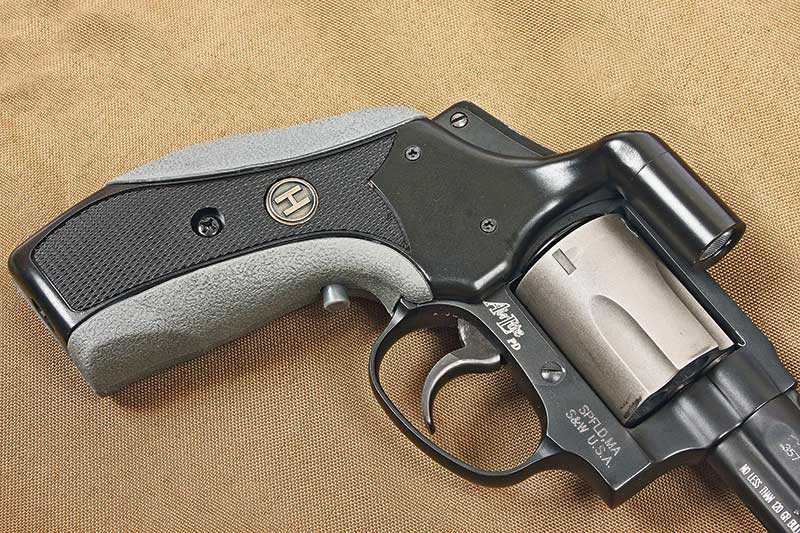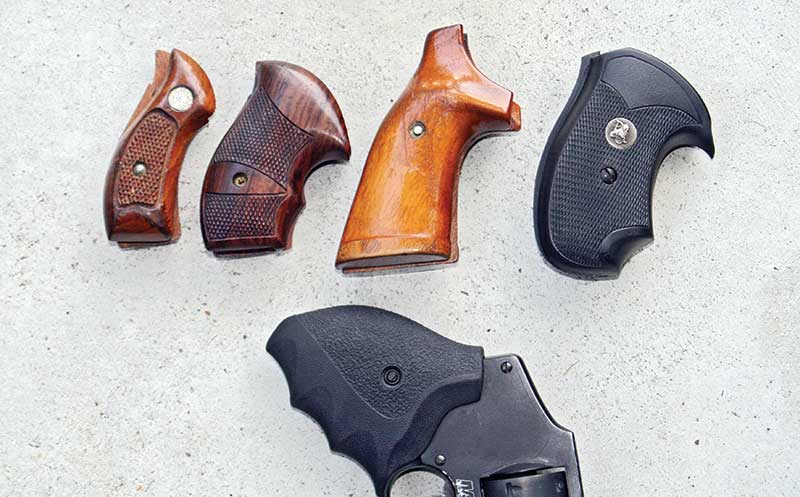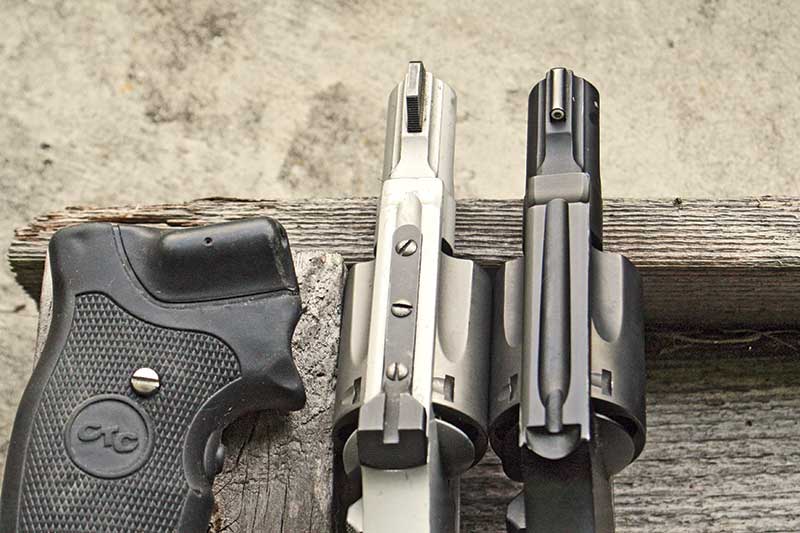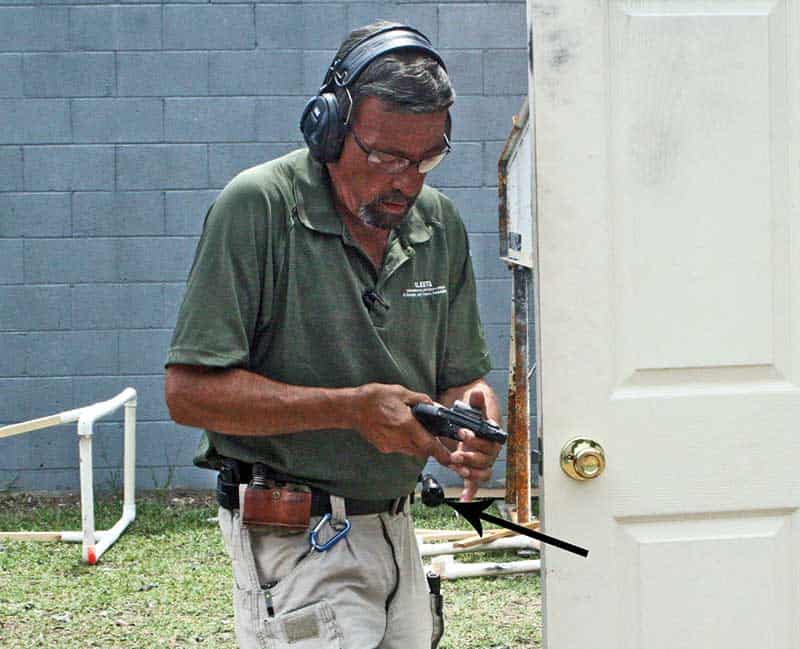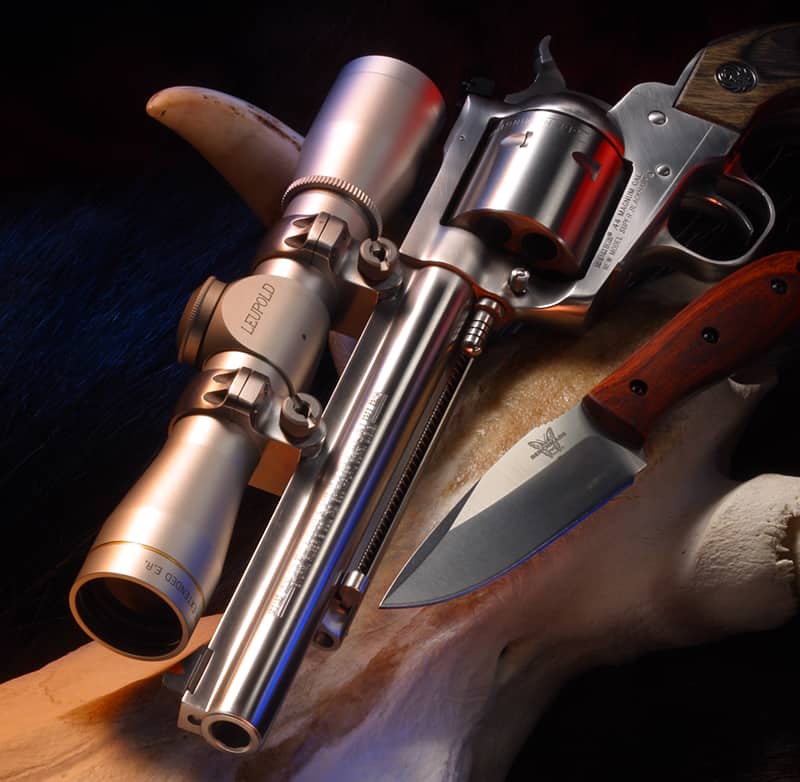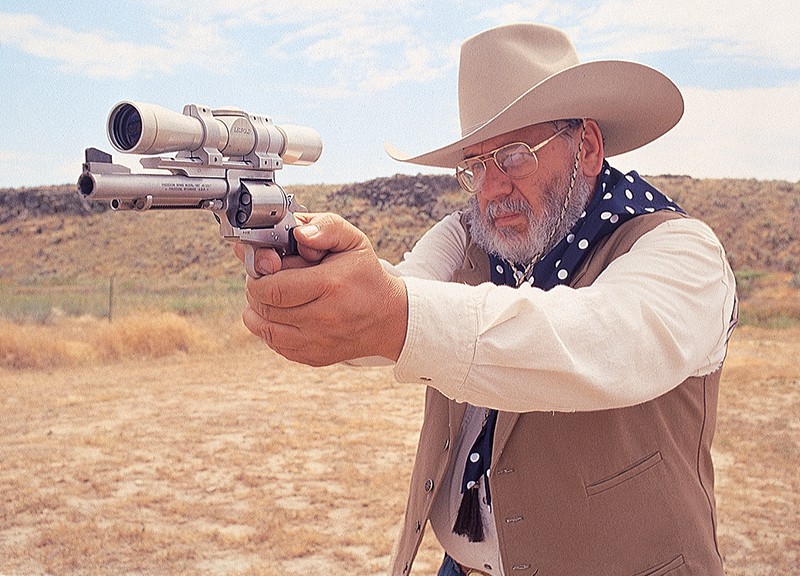J-Frame Upgrades
Though Not What You Might Want For A Match, The Ubiquitous
Small-Frame S&W Offers Important Carry Attributes
A few years ago at our sister publication American Handgunner, editorial director Roy Huntington did a poll of his writers as to their preferred carry guns. The answers encompassed everything from Glock to 1911, but the one common touchstone was virtually all of us had at least one J-Frame Smith & Wesson in their carry rotation, whether as primary or backup.
Made in calibers including .22 LR, .22 WMR to .327 Federal Magnum and 9mm, the J-Frame is most commonly encountered as a 5-shot .38 Special or .357 Magnum on its extended .32-size frame. Since the introduction of the Chief Special circa 1950, it has been America’s most popular “snubnose .38” and remains hugely popular for armed citizen concealed carry and police back-up and off-duty carry.
The tapered barrel and rounded butt make it faster when drawing from ankle holsters (presuming you don’t have a snag-prone hammer spur), and quicker to access and clear from a pocket. The shrouded hammer models in particular allow firing at close range through coat pocket or purse. With hard muzzle contact against a belly-to-belly rapist or killer, most autos would come “out of battery” and fail to fire at all, but these snub revolvers will guarantee a shot for every pull of the trigger, with the muzzle blast significantly magnifying each wound at press-contact distance.
The downsides of the J-Frame are likewise well known: nasty recoil and hard-to-see sights, both of which impair hit potential, particularly as speed and distance increase. Fortunately, those shortcomings can be significantly alleviated with careful attention to grips, sights, and planning.
Stocks
Start with your choice of J-Frame. The “hammerless” Centennial style (Model 642, etc.) gets my vote because the shooter’s hand can get higher on the backstrap, lowering bore axis and reducing muzzle rise. Next most controllable is the Bodyguard (Model 638, etc.) whose built-in hammer shroud acts like a recoil shield at the web of the hand to prevent the gun from rolling up on recoil, which can let a Chief Special (Model 637, etc.) hammer be blocked by the web. The original, tiny “splinter” stocks on early J-Frames tended to let the gun twist in the hand upon recoil. Pachmayr and Tyler-T (and now, BK) grip adapters helped, without changing the gun’s concealability. However, decades ago, Craig Spegel designed his much copied Boot Grips which kept concealability, but filled the hand much better.
To decrease recoil discomfort you need to cushion the web of your hand, and many neoprene grips will do a good job of that. My own favorites in that respect are Pachmayr Compacs, which increase bulk more than I like for pocket carry but are still concealable, and shaped to distribute the “kick” across the entire web of the hand. Of late, I’ve come to appreciate the new Ergo Delta grips, which seem to direct the recoil into the heel of the hand. The Ergo also has a Luger-like grip angle, locking the muzzle down to reduce muzzle rise, and I’ve found it acceptably sized for trouser pocket carry.
Sights
In their early decades, J-Frames had tiny 1/10-inch wide front sights and equally Lilliputian rear notches notoriously hard to align in less than ideal conditions. Some prized the rare adjustable sight version of the Chief Special because the sights were at least visible. Most of us just painted the sights and hoped for the best, until S&W finally made them bigger. The best in the S&W catalog for my money are the XS Big Dot front with correspondingly large rear U-notch, found on the expensive-but-worth-it Model 340 M&P .357 snub. Of course, you can get larger Patridge sights from Dave Lauck at D&L Sports. Or, you can simply go laser. I’ve seen John Strayer win the Snubby Summit match in 2005 with a stock Model 642 and Crimson Trace LaserGrips against target-sighted 2.5-inch Model 19’s and Colt Pythons, and Dave “the Blaze” Blazek with the same gear once beat night-sighted subcompact autos at Lance Biddle’s Back-Up Gun Championship. The Crimson Trace Model LG-405 laser grip gets my vote for the best balance of concealment and control.
Firepower
Five shots are often enough, but not always. Tuff Strips and Bianchi Speed Strips fit the “watch pockets” in jeans. My new favorite speedloader for the J-Frame is the Jetloader from Buffer Technologies. Snubby guru Michael deBethencourt turned me on to it. It’s simply faster for me than anything else, and while longer than other speedloaders, it conceals perfectly in the cell phone pocket of cargo shorts or upright in the outer corner of a hip pocket (a folding handkerchief holds it in place). Of course, the trusty New York reload—another loaded J-Frame elsewhere on your person—is faster still!
Training is key. The three best J-Frame courses I can recommend are taught by Michael deBethancourt in Massachusetts, Denny Reichard in Indiana and Claude Werner in Georgia. Google will get you to all of them.
The J-Frame S&W is like any other tool. Take advantage of its strengths, and shore up its weaknesses. The S&W 340 M&P, loaded with Speer’s street-proven .38 Special 135-grain +P Short Barrel Gold Dot ammo, remains my single most often carried backup gun.

Get More Revolver Content Every Week!
Sign up for the Wheelgun Wednesday newsletter here:
